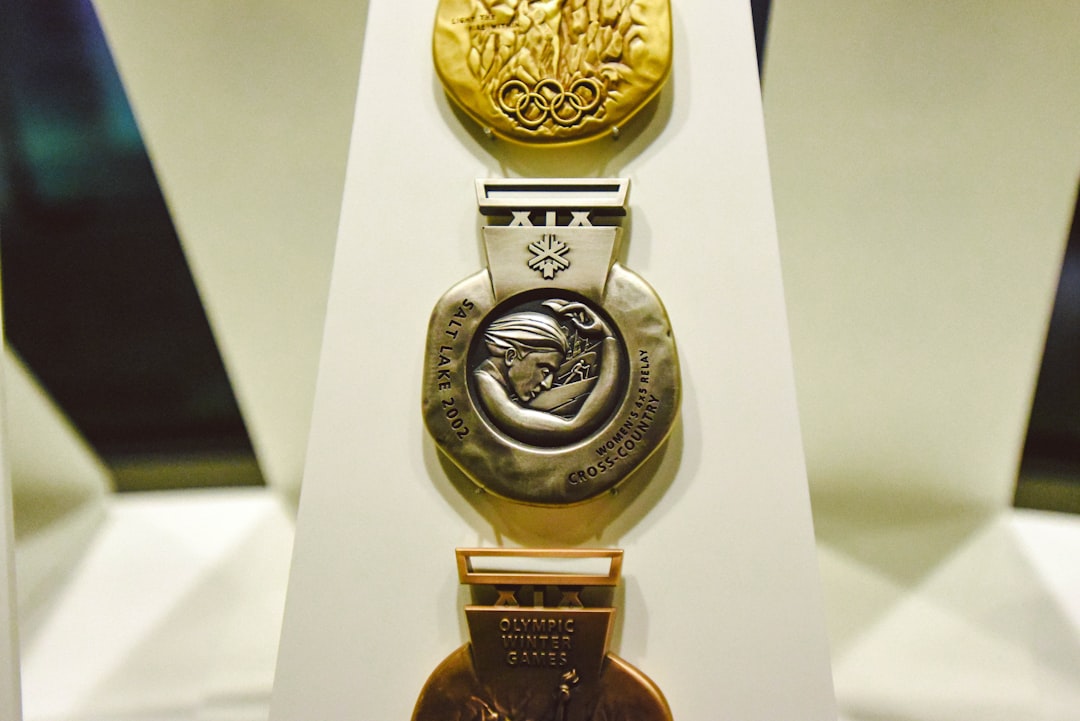You’ve probably seen it countless times after an Olympic win — the triumphant athlete grinning widely as they lean in to bite their shiny new medal. It’s one of the most iconic and peculiar traditions in sports photography. But have you ever paused to wonder, why do athletes bite their medals? Is it just for the cameras, a deeply rooted tradition, or does it hail from a more practical origin? Let’s sink our teeth into the history, the symbolism, and the real reason behind this curious practice.
The Origins of Biting Gold: A Historical Glimpse
The act of biting into precious metals goes way back to ancient times. Historically, people would bite gold coins to test their authenticity. Pure gold is relatively soft and malleable, so a genuine coin would show slight bite marks if real. A harder metal, like lead or a gold-plated fake, wouldn’t.
While this practice was more common among merchants and traders than athletes, it’s possible that this historical act of testing gold authenticity has morphed into the symbolic gesture we see in sports today. In other words, athletes aren’t actually checking if their medal is real gold — but the bite has become a ritual nod to vintage methods of testing metal purity.

Modern Symbolism: A Photographic Trend
In modern sports, the answer to the medal-biting craze lies far more in media culture than mineral biology. It turns out that the athletes aren’t the ones initiating the bite; photographers are usually behind it. Over time, the act has become an expected pose, almost akin to a victory stance. Photo agencies push for exciting, relatable, and time-honored images — and nothing says “I won” quite like the champion biting their medal.
Diego Maradona, Naomi Osaka, Usain Bolt — just about every modern sports legend has participated in this widely recognized image ritual. It’s evocative, playful, and eye-catching, making it perfect for news headlines, magazine covers, and social media feeds.
Fact Check: Are Olympic Medals Made of Real Gold?
This leads to another interesting aspect of the tradition. If the gesture historically meant testing for real gold, that prompts the question: Are Olympic gold medals actually made of gold?
Surprisingly, no! Since the early 20th century, Olympic gold medals have not been made of pure gold. According to the International Olympic Committee’s guidelines, today’s gold medals are made primarily of silver and are coated with approximately 6 grams of pure gold. That’s less than a tenth of the entire weight of the medal.
Here’s how Olympic medals break down:
- Gold Medal: 92.5% silver with a gold plating
- Silver Medal: 92.5% silver
- Bronze Medal: A mix of copper, tin, and zinc
Biting a gold medal today won’t tell you much about its authenticity or composition — but it still serves as a playful nod to the time when such tests carried real consequences.
The Psychology Behind the Bite
Beyond tradition and photography, there may be a subtle psychological element at play. Biting a medal is an instinctual, even primal gesture. Achieving a medal, especially at the Olympic Games or in world championships, is often the peak of an athlete’s career — a moment of overwhelming pride and joy.
This action could also be fueled by what psychologists call embodied cognition — a theory that physical motions can reinforce emotional states. Biting the medal might amplify or solidify the surreal feeling of victory, making it more real in the athlete’s mind.
In a way, it says: “Is this really mine? Let me taste it, just to be sure.”

Some Athletes Are Skeptics
It’s important to note that not every athlete embraces the tradition wholeheartedly. Some are baffled by the request, and others comply only to satisfy the swarm of cameras at the finish line.
Sara Hughes, an American beach volleyball player, humorously said in an interview, “I don’t want teeth marks on my medal!” Many medals are artistically designed and valuable keepsakes, so sinking your teeth into them may not sit well with their owners.
In fact, overly enthusiastic biting has led to accidents. There have been reported cases of athletes accidentally chipping a tooth or damaging the medal. So while it looks charming, it might not be entirely harmless.
Other Curious Medal Traditions
Biting is just one part of an extensive tapestry of sports traditions associated with victory ceremonies. Here are a few others:
- Kissing the medal: A tender gesture of respect and emotional fulfillment, often seen right after receiving the award.
- Wearing the medal backward: Some athletes reverse the medal on their neck to show the engraved side that displays the event details.
- Handing it to family or coaches: A symbolic act of gratitude, recognizing the sacrifices and support behind the scenes.
In every case, these gestures tell stories — some personal, some universal — all fueled by pride, achievement, and a bit of showmanship.
Celebrity Impact and Social Media Virality
The medal-biting trend has only grown with the rise of social media. Now memes, trending hashtags, and viral GIFs have amplified the gesture’s visibility. An athlete biting their medal at the podium is instantly shared and celebrated worldwide.
Moreover, athletes have gained tremendous personal branding power. That single snapshot — teeth on metal, fist in the air — can become a defining image, earning endorsements, increasing fan following, and building legacy.
In essence, biting the medal isn’t just a quirky habit — it’s good publicity.
Is the Tradition Here to Stay?
With its combination of historical roots, media appeal, and psychological impact, the medal-biting tradition seems firmly planted in contemporary sports culture. While its practical function disappeared long ago, its symbolic and societal value continues to shine brightly. As long as cameras roll and winners smile, biting the medal is likely going nowhere.
Still, some voices in the sports world whisper that the tradition is overly cliched. As athletes look for new ways to express themselves in the spotlight, perhaps a new stance or symbol will emerge — but for now, the bite remains the bite.
Conclusion
So the next time you see an athlete gnawing at their shiny prize, you’ll know there’s more to the gesture than meets the eye. From its ancient gold-testing roots to its modern-day media magnetism, biting a medal is a unique blend of history, symbolism, and celebration.
It’s theatrical, memorable, and it tells a story of victory in a single frame.

Whether it’s a playful moment of disbelief, a nod to tradition, or just following the photographer’s cue, one thing is certain: biting the medal isn’t about hunger—it’s about honor.



